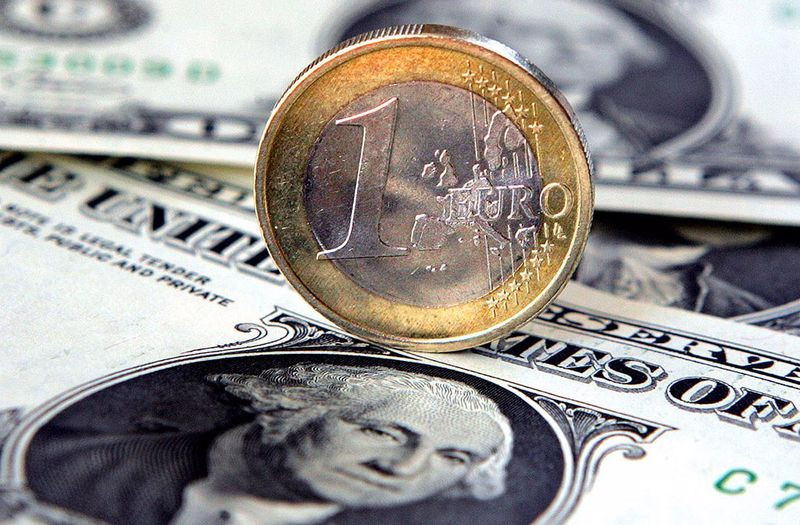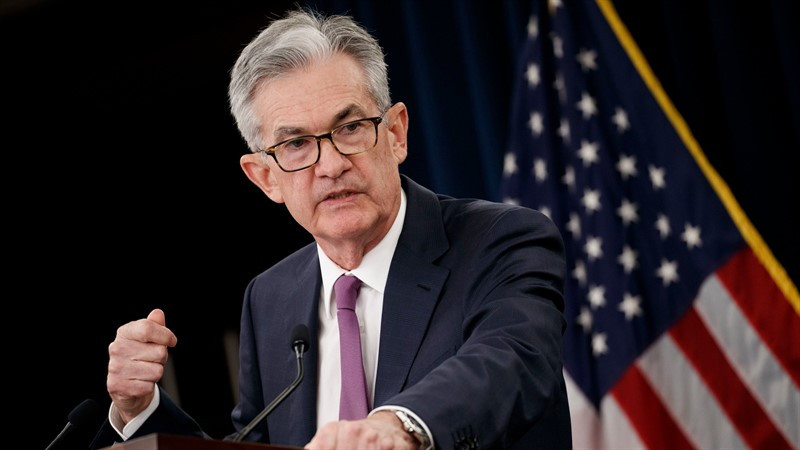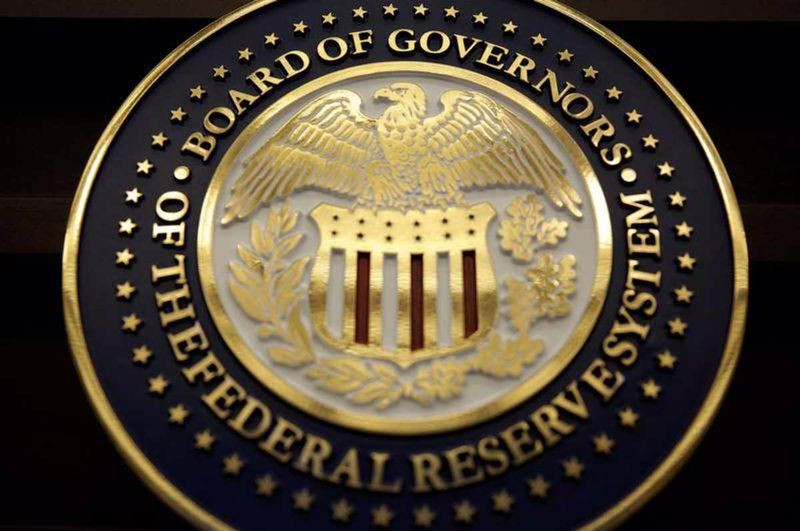
Apparently, the Federal Reserve and the European Central Bank underestimated the challenges they have had to face in recent years. Now they are forced to take a shaky path, risking undermining their credibility.
Like tightrope walkers, central bankers on both sides of the Atlantic can only concentrate, ignore distractions and hope that they will be able to maintain balance.
Of course, ECB officials and their American counterparts cannot be blamed for failing to predict price spikes due to the escalation of the conflict between Russia and Ukraine or, possibly, the duration of global supply chain problems.
However, a further increase in central banks' balance sheets in 2021 and keeping rates near zero seems to have helped set the stage for the current turmoil.
Overall inflation in the eurozone in May reached 8.1% year-on-year, similar to the level in the United States.
Fed Chairman Jerome Powell waited until November last year to stop calling inflation "temporary." Last month, he admitted that in retrospect, it probably would have been better to raise rates earlier.
Last week, ECB President Christine Lagarde announced that the inflation rate has risen sharply, and to solve this problem, the central bank will announce a 25 basis point rate hike in July. The ECB plans to implement a second rate hike in September and will take a bigger step if the inflation forecast does not improve. After September, the central bank intends to raise the base rate gradually.
"We will make sure that inflation returns to our target of 2% in the medium term. It's not just a step, it's a journey," Lagarde said.
It is noteworthy that until recently she spoke about the absence of the need for multiple rate hikes.
According to Lagarde, the factors supporting economic activity in the eurozone remain, and their influence is likely to intensify in the near future.
The eurozone will avoid recession this year, and economic growth in the region will noticeably accelerate after reaching the "bottom" in the second quarter, a June survey of monetary analysts published by the ECB on Monday showed.
They expect the currency bloc's economy to grow by 0.1% in the second quarter, accelerating to 0.4% in both the third and fourth quarters.
In May, core inflation in the eurozone was 3.8% year-on-year, which is lower than the same indicator in America at 6%. This is a reflection of slower wage growth in the eurozone, as well as the fact that higher energy prices are already limiting Europeans' spending on other goods.
Thus, the ECB has a much better chance of suppressing any excess demand in the system due to a couple of rate hikes than the Fed. But the "overheating" of the economy is not a problem for the eurozone. Its real problems lie in another plane – in the conflict in Ukraine and in China's inability to coexist with COVID-19. Both of these factors are already causing a noticeable slowdown in production in Germany, which is traditionally the engine of the region's growth. Unless there are significant changes in these two areas, inflation in the eurozone may remain higher for longer than previously thought.

"Inflation is very high, more stable and widespread than we thought a few months ago. We intend to raise rates by 0.25% in July. For September, we can consider a larger increase if inflation is defined as a quantitative measure of the rate at which the forecast of the average price level persists or worsens," ECB Vice President Luis de Guindos said.
Money markets are currently pricing in an increase in the cost of borrowing in the eurozone by about 190 basis points by December.
However, the sad truth is that most of the eurozone countries cannot afford a higher interest rate. The currency bloc's economy has not grown fast enough for most of its existence to withstand the debt burden it currently has. Sovereign debt was already high before COVID-19, but the pandemic has created a large surplus of public debt. Each increase in the market interest rate will force national governments to devote more and more resources to servicing this debt, rather than investing in manufacturing, healthcare and infrastructure.
Apparently, the ECB was faced with a difficult choice. If the central bank sticks to a 25 basis point rate hike by September, it could be accused of complacency after consumer prices jumped to a record high in May. But with an immediate rate hike of 50 basis points, the central bank risks letting the bond market genie out of the bottle, provoking a kind of self-reinforcing panic that led to the debt crisis in 2011 and 2012.
Meanwhile, the Fed has faced criticism from some experts that it has acted too slowly in curbing inflation or is already behind schedule.
"Fed officials are in a very difficult position, in which, frankly, they have put themselves, incorrectly conducting monetary policy and allowing inflation to grow as much as it is. The so-called "soft landing" looks more and more doubtful," said strategists at Angeles Investment Advisors.
Inflation in the US is too high, and the Fed is ready to act decisively to contain it, Powell said on Thursday following the results of the FOMC meeting.
The American economy is very strong and will be able to cope with the tightening of monetary policy, he added.
Powell noted the presence of signals that GDP growth accelerated in the second quarter and consumer spending remains strong. He expects a sharp decline in inflation in the coming years. The Fed chairman also said that the central bank's goal is to achieve consumer price growth rates at 2% per year while maintaining a strong labor market.
"The bottom line is that at the moment there is a small conflict between the two mandates of the Fed. But the central bank's work may become much more difficult next year if inflation remains high and the unemployment rate exceeds 4%," Bank of America analysts said.
The FOMC raised the key rate by 75 basis points to 1.5-1.75% the day before.

"We are firmly committed to reducing inflation in the US and are acting urgently to achieve this. We have the necessary tools and determination to restore price stability," Powell said.
Despite the highest increase in the Fed's base interest rate since 1994, the US stock market showed steady growth on Wednesday.
In particular, the S&P 500 index rose 1.45% to 3,789.99 points, as a result of what some investors called a vote of confidence in the central bank, which showed that it intends to take decisive action against stubbornly high inflation.
As an initial reaction, the greenback jumped to the highest level since December 2002 in the area of 105.80, but then turned around and fell to 104.50. In many ways, this reaction is explained by the use of the "buy rumors – sell facts" strategy.
The fact is that investors were already ready for an aggressive Fed rate hike. In addition, the players seem to have decided to focus on the statements of the central bank that in the long run the economy will benefit from the current curbing of inflation.
The "investment" rally lifted not only risky assets from the "bottom", but also the protective yen, which reached a new 24-year low of 135.60 per dollar at the beginning of yesterday's session, before erasing losses and growing by about 1.3% against the US currency.
The EUR/USD pair also changed its direction and closed in positive territory, rising by almost 0.3% to 1.0443.
On Thursday, the greenback retreated even further from a new 20-year peak after an unsuccessful attempt to return to the growth trajectory and win back the level of 105.00. This time, the dollar fell for the company with the key Wall Street indices, which returned the achievements of the previous day.
Despite the assurances of Powell's belief that policymakers will be able to provide a "soft landing", market participants are already less confident that the economy will emerge unscathed from what could be the sharpest tightening cycle since 1994.
Wells Fargo analysts said that the probability of a recession is currently more than 50%. Deutsche Bank and Morgan Stanley have also warned of growing recession risks.
Tracking the renewed weakness of the dollar, the EUR/USD pair jumped by more than 200 points on Thursday, touching earlier local lows around 1.0380.
Having failed to contain inflation with previous decisions, the US central bank is doing everything possible in an attempt to reverse price growth and reduce inflation.
Now the Fed needs data that would play along with it, and so that inflation does not surprise again. If that happens, the 75 basis point rate hikes in July and September will be quickly overvalued.
However, for now, the US central bank intends to follow the chosen course, which should support the dollar.

The FOMC will certainly stick to its decidedly hawkish position. Accordingly, the USD index can arrange a run to the 107 mark, according to Westpac strategists.
According to them, the EUR/USD pair is still vulnerable and may test the 1.0340-1.0350 area (the lows of the last seven years). At the same time, they do not exclude the possibility of sliding to 1.0100 or even to the parity level.
"Higher debt servicing costs will exacerbate the cost-of-living crisis in the eurozone and expand inflationary pressures from the conflict in Ukraine. The dependence of the currency bloc on Russian energy carriers is acutely felt in Germany, as well as in southern countries, especially in Italy and Greece. Therefore, the ECB needs to eliminate the risks of widening the yield spread (or "fragmentation"), destabilizing the eurozone," Westpac reported.
Economists at MUFG Bank note that concerns about energy supplies to Europe and the risks of fragmentation in the eurozone are also putting pressure on the single currency.
"Significant disruptions in energy supplies to the main economies of the eurozone continue to represent the main downside risks for the euro and may cause a stronger slowdown in regional growth. The so-called "fragmentation" will provide additional downside risk for the euro in the near term, and it is important that the ECB continues to take measures to effectively address this problem," they said.
Credit Suisse specialists adhere to the bearish mood for the EUR/USD pair and are waiting for a possible breakthrough below the lows from the beginning of the year and 2017 at 1.0350-1.0341 to fall to parity.
"We expect a possible clear and steady break below the lows from the beginning of the year and 2017 at 1.0350-1.0341, which will serve as a catalyst for the resumption of the main downtrend with initial support at 1.2810, and further – at 1.0217-1.0209. A breakdown of this area will make it possible to fall to parity or even to 0.99," they said.
Credit Suisse considers the current weakening of the US currency a temporary phenomenon and predicts that the USD index will rise to 109.25-110.25.
"We continue to wait for the USD index to break through the 105.00 mark to move to 109.25-110.25. Support at the level of 101.49-101.05 should ideally limit the fall. A break below will warn of a deeper, though still corrective pullback to support at the level of 99.82-99.42," the bank's analysts said.
 English
English 
 Русский
Русский Bahasa Indonesia
Bahasa Indonesia Bahasa Malay
Bahasa Malay ไทย
ไทย Español
Español Deutsch
Deutsch Български
Български Français
Français Tiếng Việt
Tiếng Việt 中文
中文 বাংলা
বাংলা हिन्दी
हिन्दी Čeština
Čeština Українська
Українська Română
Română

